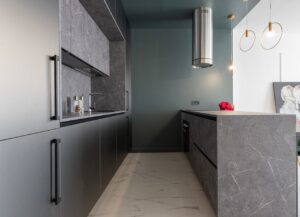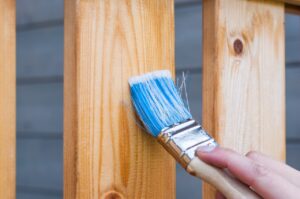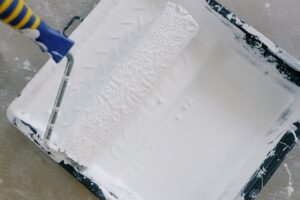
First-Time Homeowner Guide: Choosing The Perfect Custom Cabinet Painting For Your Kitchen
Are you a first-time homeowner looking to enhance your kitchen’s appearance? Let’s explore a key element that can truly transform your space – custom cabinet painting. The right choice of cabinet paint can breathe new life into your kitchen and reflect your style. As a first-time homeowner, you have the advantage of starting fresh and creating a kitchen that truly feels like yours. In this guide, we’ll walk you through everything you need to know about choosing the perfect custom cabinet painting for your kitchen. From understanding the importance of selecting the right paint to exploring how it can enhance your kitchen’s overall look, we’ve got you covered. So, let’s dive in and discover how to make your kitchen shine with a custom cabinet paint job! Whether you’re looking for a sleek modern look or a cozy, rustic feel, custom cabinet painting is a fantastic way to transform your kitchen and make it uniquely yours. Let’s explore the various options and considerations to ensure you get the perfect custom cabinet paint for your dream kitchen! Factors To Consider When Choosing A Cabinet Color Selecting the ideal cabinet color for your kitchen is a crucial decision that significantly influences the overall ambiance of your space. To guide you in making the right choice, here are key factors to consider: The Impact Of Color: Your cabinet color sets the tone for your kitchen. Bold and vibrant colors create a lively atmosphere, while neutral tones offer a classic and timeless look. Determine the mood you want to establish in your kitchen and choose a color that aligns with it. Complementing Existing Decor: Consider your current kitchen decor when selecting a cabinet color. Take note of the color scheme, materials, and finishes of elements like countertops, backsplash, and flooring. Opt for a cabinet color that harmonizes with these existing features for a cohesive and visually pleasing design. Size And Layout Considerations: The size and layout of your kitchen are crucial in determining the right cabinet color. Lighter shades can make small kitchens appear more spacious, while darker hues add depth and richness to larger areas. Additionally, observe how natural light enters your kitchen, as it can impact how colors appear throughout the day. Popular Cabinet Colors: Explore Popular Cabinet Colors That Complement Different Kitchen Styles: Traditional kitchens often feature warm wood tones like cherry or walnut. Modern kitchens tend to embrace sleek white or gray cabinets for their clean aesthetic. Farmhouse-style kitchens commonly incorporate soft pastel shades such as mint green or pale blue. Industrial-style kitchens may opt for bold colors like black or navy to create a striking contrast. By considering the impact of color, complementing existing decor, size/layout considerations, and popular options based on different kitchen styles, you’ll be equipped to select the perfect custom cabinet painting. This thoughtful approach ensures your chosen cabinet color enhances your kitchen, creating a space that perfectly suits your taste and style. Step-By-Step Guide To Painting Your Kitchen Cabinets Preparing your cabinets for painting is a crucial first step in ensuring a successful and professional-looking result. Here’s a step-by-step guide to help you achieve the best outcome: Thorough Cleaning: Start by thoroughly cleaning your cabinets to remove any built-up grease or grime accumulated over time. Clean surfaces ensure better paint adhesion and a smooth finish. Sanding For Smoothness: After cleaning, sand the cabinets to create a smooth surface for paint application. Sanding helps remove imperfections and ensures an even finish. Remove Hardware: For a clean and professional look, take off all hardware such as handles, knobs, and hinges before painting. Store them safely to reattach later. Protect Surrounding Surfaces: Before starting the painting process, protect surrounding areas like countertops and floors with drop cloths or plastic sheets to prevent accidental spills and splatters. Begin Priming: Apply a high-quality primer evenly across all cabinet surfaces using a brush or roller. Priming helps the paint adhere better and provides a solid base for the color coats. Choose The Right Paint: Select a durable paint specifically designed for kitchen cabinets to ensure longevity and resistance to daily wear and tear. Apply Thin Coats Of Paint: Carefully apply thin coats of paint using a brush or roller, allowing each coat to dry completely before adding the next. Multiple coats may be necessary for full coverage. Allow Ample Drying Time: After applying all desired paint coats, allow ample drying and curing time before handling or reinstalling hardware. Proper drying is essential for achieving a professional finish that withstands regular use. By following these steps, you can ensure that your cabinets are properly prepared and painted, resulting in a clean, durable, and professional finish. Taking the time to prepare and paint your cabinets correctly will yield a kitchen transformation that enhances the overall look and feel of your space. Tips For Achieving A Professional Finish On Your Cabinets Transforming your kitchen with a fresh coat of custom cabinet paint and achieving a professional finish doesn’t have to be daunting. By employing the right techniques and using the appropriate tools, you can create a stunning transformation. Here are some essential tips to help you achieve that flawless finish: Techniques For Smooth Brush Or Roller Strokes Begin by thoroughly preparing the cabinet surface, ensuring it is clean and any rough areas are sanded. Opt for high-quality brushes or rollers to apply the paint smoothly, avoiding cheap brushes that may shed bristles or leave streaks. Apply the paint in long, even strokes, following the grain of the wood to minimize visible brush marks. Using High-Quality Brushes Or Sprayers Invest in good quality brushes or consider using a paint sprayer for even paint application. High-quality brushes hold more paint and distribute it evenly, resulting in a smoother finish. Paint sprayers can provide an ultra-smooth coat of paint and save time compared to traditional brushing. Avoiding Common Mistakes Prevent drips by avoiding overloading the brush with too much paint; use thin coats and allow each layer to dry before applying another. If you notice streaks or









